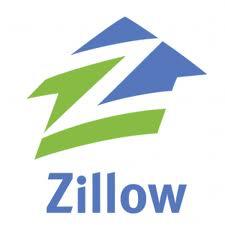
I had the pleasure of attending KW Mega Camp This year (crappy photo above to prove it!)
I saw some very interesting things, but most interesting was a session about SEM vs SEO. Having about 8 years of experience myself, SEM/SEO are a topic near and dear to my heart.
Overall the session was informative, and kept things basic for the crowd. They demonstrated a few strategies about building “free leads” with organic traffic generated by local focused blogging, and high volume “paid leads” from Facebook and Google search.
Overall the consensus is the usual that everyone should understand…
- SEO = FREE with lots of time.
- SEM = NOT FREE, but faster results.
I spoke with a lot of agents about the session, and it seemed that most were just as confused as ever about what to do in the world of search marketing. I gave them all my pro tip; so it here it is for you…
HIRE SOMEONE.
It’s really that simple. I see so many agents go round, and round trying to figure out blogging strategies, social marketing techniques, keyword optimization, and the list goes on. There’s nothing wrong with learning a few strategies like how to post your listings on Facebook, or the basics of optimizing a blog post. However running down the search engine rabbit hole for many folks is almost certainly a path to failure.
Ask yourself a simple question.
“Did over 50% of my business come from sphere, referrals, and word of mouth last year?” 75%?
If the answer is yes then why the hell would you want to change that now? If being an SEO master has not been a significant factor contributing to your real estate success, then I doubt it’s ever going to be in the future. Of course this does not excuse you from a world that is continuously beginning to revolve around online presence. Having a solid SEO, SEM, and Social marketing strategy is now more important than ever, and this is why it’s important that you hire an expert to manage this part of your business. Key emphasis on the word part. As a business owner delegation, and management should be your primary skill. Understanding that you can’t be fully hands on in some parts of your business is what every coach/speaker to is trying to help you understand.
“But I’m broke! I need to DIY this”
Totally understandable. If you’re not getting any results from anything then maybe focusing on 1 skill like social advertising could be a viable option for you to generate leads. If you’re already doing well, but are a total penny pincher consider that losing focus on the overall goal of your business (to close deals) is likely going to cost you a lot more in the long run than hiring an expert.
A Few Expert Options
- Technology Platforms: Many technology platforms include SEM, SEO, and Social marketing services as a part of the platform. This can take on a huge amount of the load when it comes to online marketing, and free you up to focus on the brand portion.
- Local Agency: I highly recommend you consider this option if you’re not using a tech platform. This is going to give you the ability to have a real conversation, stay involved at a high level, and get a high degree of attention for your dollars. Most local agencies, especially quality content marketing ones will also be able to assist you with your brand story, and other aspects of your online presence that greatly matter. A tech platform + a local brand agency could even be the ideal outsourced marketing team.
- STAY AWAY from anyone who solicits your business online! I’ve always thought RE sales people would have a nose for BS, but I can’t believe the amount of folks who sign with cheap/scammy SEO firms from a spam email. Don’t do this, it could cause more harm than good.
- In House Hire: This is a fantastic option for a larger team/brokerage or a fast growing business, but it’s not for the faint of heart. A huge mistake is to look at your bank account, and then hire the cheapest person you can find. Look for proven experience, and understand that one person is likely not going to be able to do everything you need in house.
- Hiring a Marketing manager for example is step 1. Step 2 is buying them all the optimization tools they need, and enabling them to grow what will become a marketing team. If this isn’t where your business is in terms of GCI than the agency route may actually be cheaper, and cause fewer headaches. Even the best marketing managers are going to be “managing” a growing number of vendors. I can’t stress enough that if you aren’t willing to invest in a person, and their success then you have no business bringing them on.
TL;DR RECAP
- If you’re not an SEO/SEM expert then don’t try to start now. Focus on Real Estate.
- There are many hiring options consider what’s right for you.
- Don’t be cheap. Losing focus on what’s important is always what’s more expensive.













Recent Comments